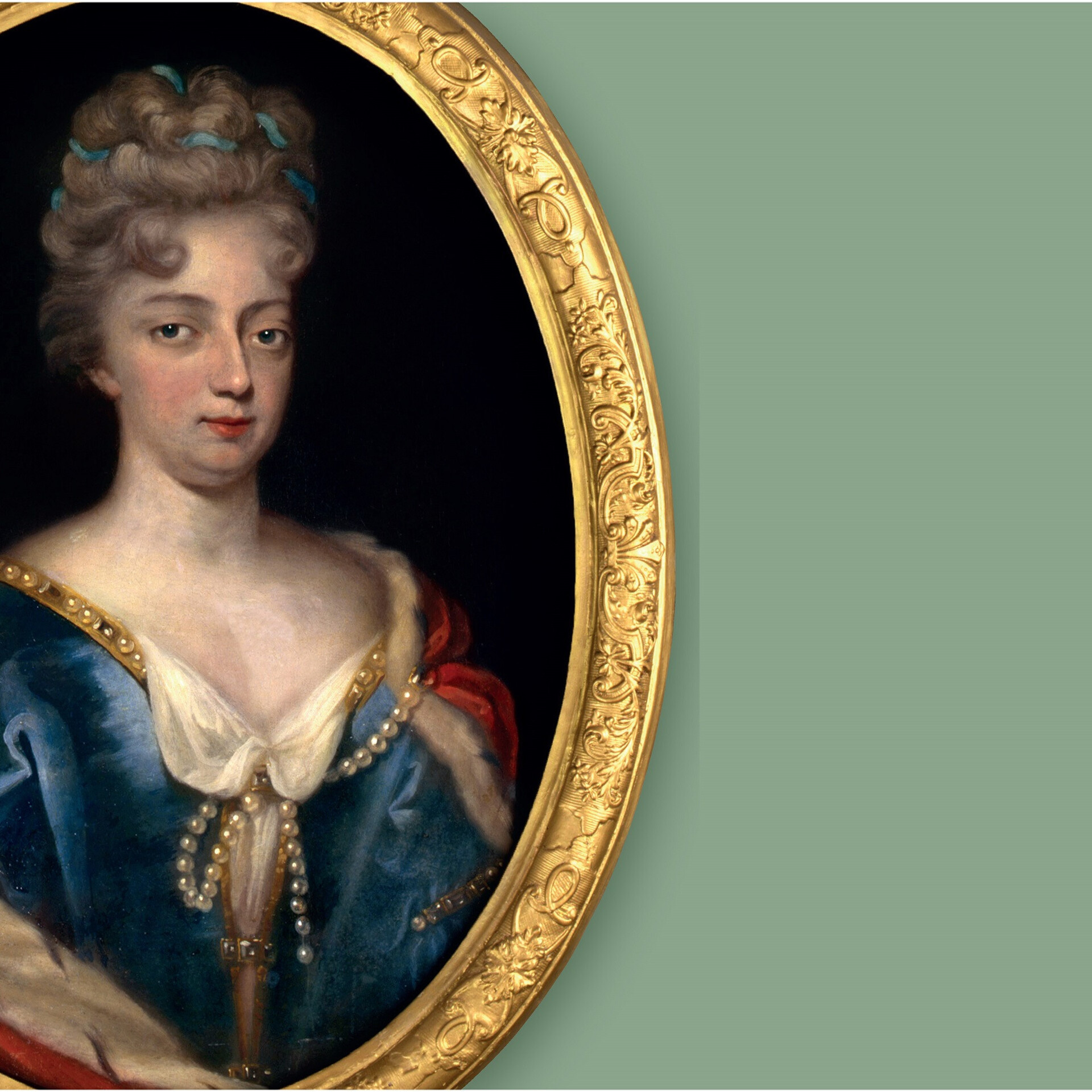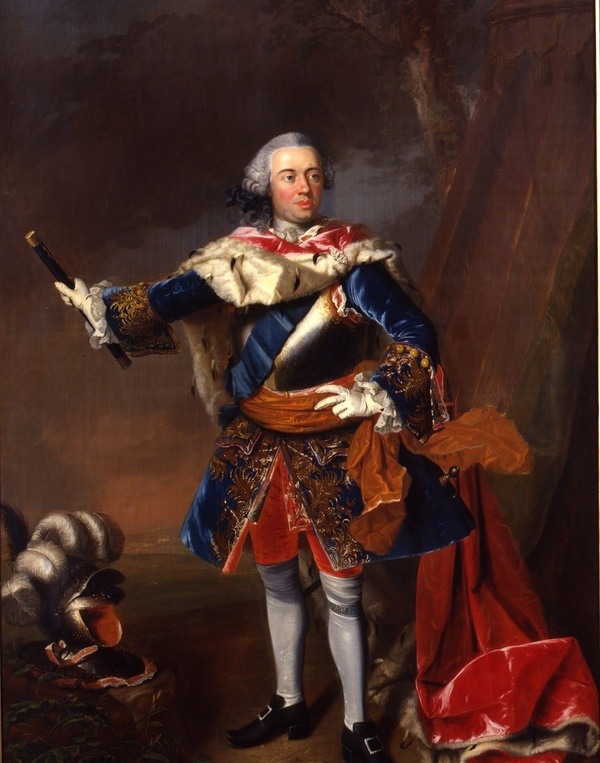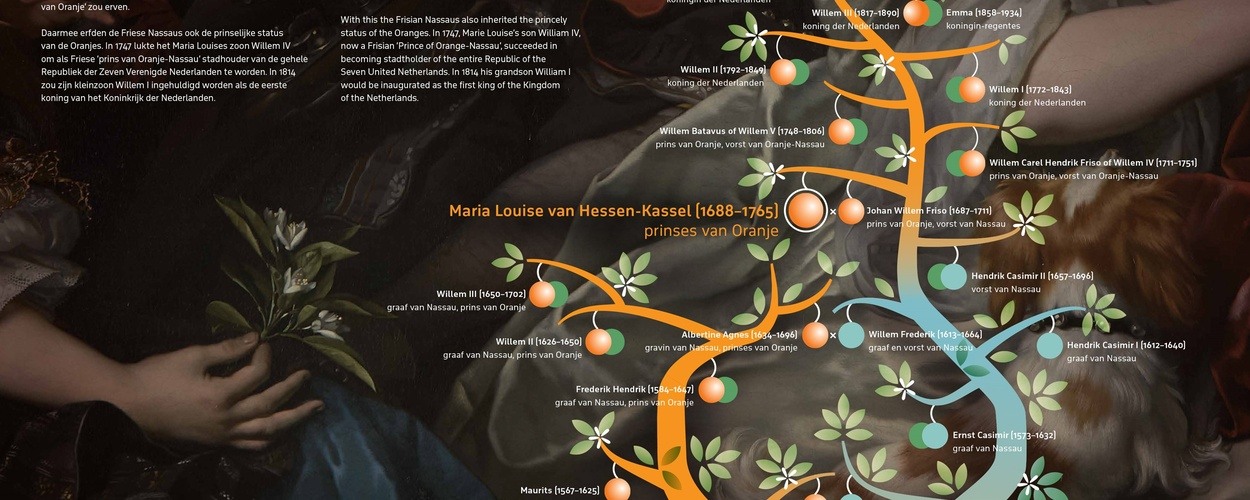Marie Louise, Princess of Orange-Nassau
Ancestor of the Dutch Royal Family
The city palace in the historic city centre owes its name to the ancestor of our current royal family: Marie Louise of Hesse-Kassel, Princess of Orange-Nassau. An intimate exhibition draws back the curtain on her eventful life. Portraits, prints, drawings and an Orange family tree show that Marie Louise was crucial to preserving the Orange Dynasty. The exhibition will become a permanent feature at the museum. This, in combination with the renewed Escher exhibition, will highlight the Princessehof’s fascinating history.
The visitor is introduced to Marie Louise of Hesse-Kassel, Princess of Orange-Nassau, on the ground floor of the city palace, where she lived from 1731 until her death in 1765. A room in the museum has been decorated with portraits of Marie Louise and her family, along with objects and prints that also illustrate the influential period of the Frisian Nassaus. Marie Louise, from an important noble German family, was 21 years old when she married John William Friso of Nassau-Dietz, stadtholder of Friesland and Groningen. From 1702 he also held the title of Prince of Orange. Marie Louise had an eventful life. Her husband died unexpectedly when she was only 23, heavily pregnant and already the mother of a toddler daughter. For twenty years she assumed his duties as regent, until her son reached majority. In this manner, the continuity of the Orange Dynasty was secured.






